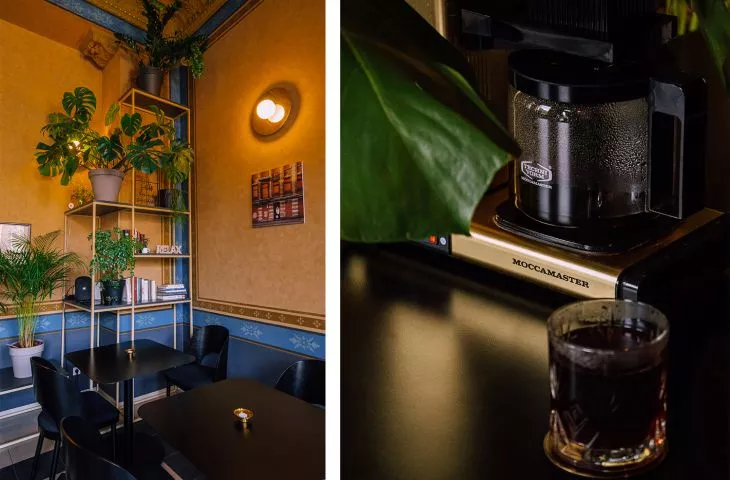The Lodz cafe is not just an intriguing interior - the building on 1/3 North Street hid many secrets, which were uncovered during a renovation in 2015.
Originally, the apartments in the building were rented out, and the premises on the first floor served as a serviceand retail space. There were 19th-centurypolychromes under the suspended ceiling, and a cross-ribbedvault (previously unheard of in Lodz architecture) in the huge basement. Thanks to the restoration of the polychromes during the restoration work, today we can see what the store room looked like two centuries ago.
Magdalena Koziej of koziej architekci was given the task of adapting the restored rooms to their new function. Today we will no longer buy meat there, which was still possible before the restoration work, but we will have a cup of coffee.
a multicultural place
The café owes its name to the Szykier couple, who owned the tenement house until 1939. The current owners , Paulina Nadel and Sebastian Jasnoch, wanted it to be a meeting place - everyone is invited to enjoy coffee and taste home-baked goods. As its regulars emphasize, it is the perfect place to read a book. Like the city of Lodz, Szykier Coffeehouse aims to be a multicultural place that appreciates diversity and inspires the exchange of ideas.
Szykier Coffee & Bistro cafe in Lodz.
photo by Dima Turbal
The architect was concerned with finding an original way to bring out the beauty of the wall ornaments. Carefully selected modern furniture was to contrast with the 19th-centurypaintings on the one hand, and not to dominate the space on the other. The designer wanted to create an interior with respect for the tradition of the historic building. The colors of the various elements - the furniture, the metal structure behind the bar and in the corners of the room - refer to the colors of the polychrome. The bar was clad in raw brass sheeting, which will change its hue over time. The simplicity of this surface contrasts with the rich patterns on the walls and ceiling.
The Shire often hosts concerts and other cultural gatherings, hence the second room, known as the "red" room, was specially prepared for such events. With the same thought, the architect chose movable furniture, so that - depending on the nature of the event - the space can be freely reconfigured.


































